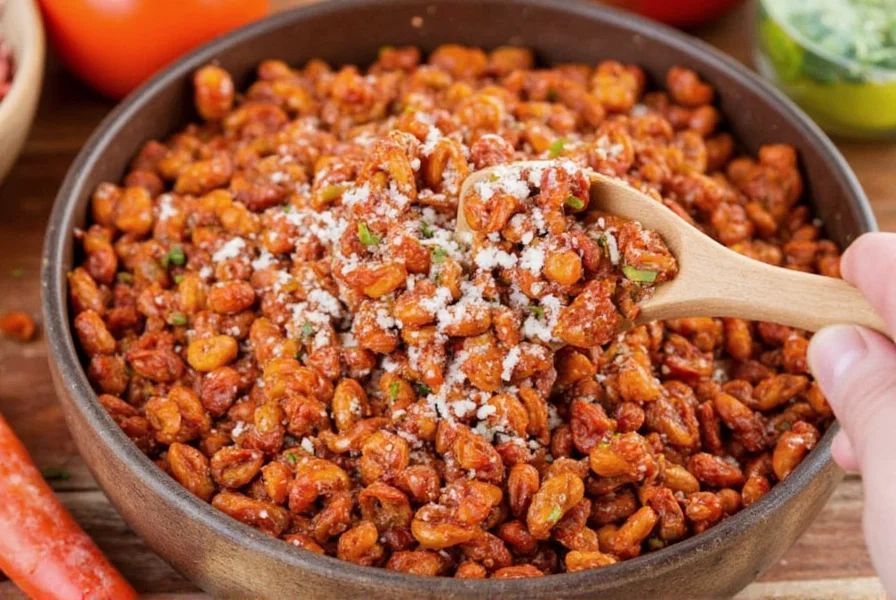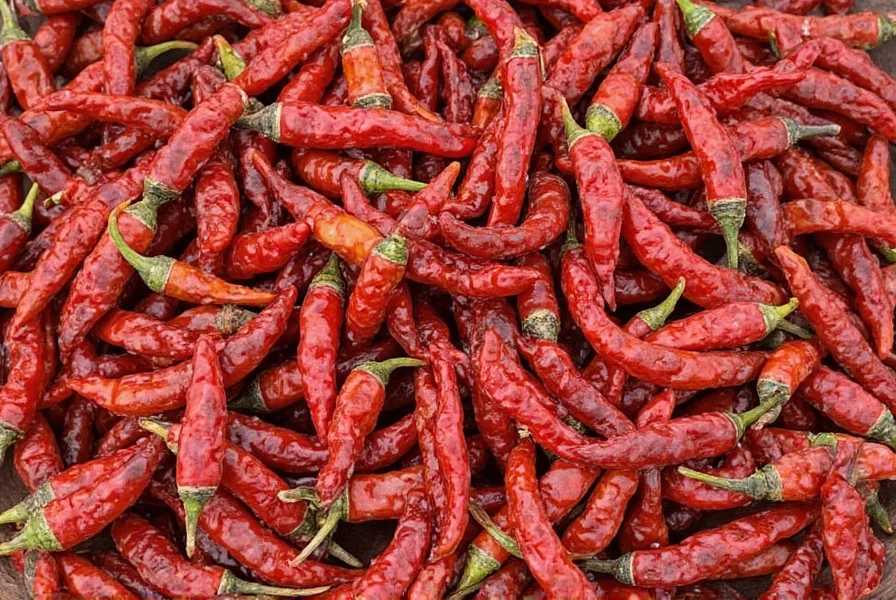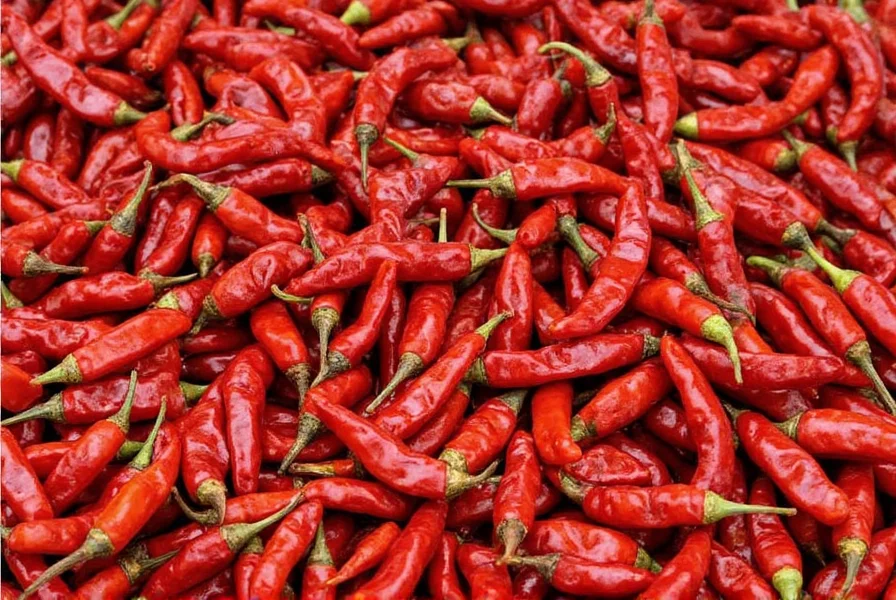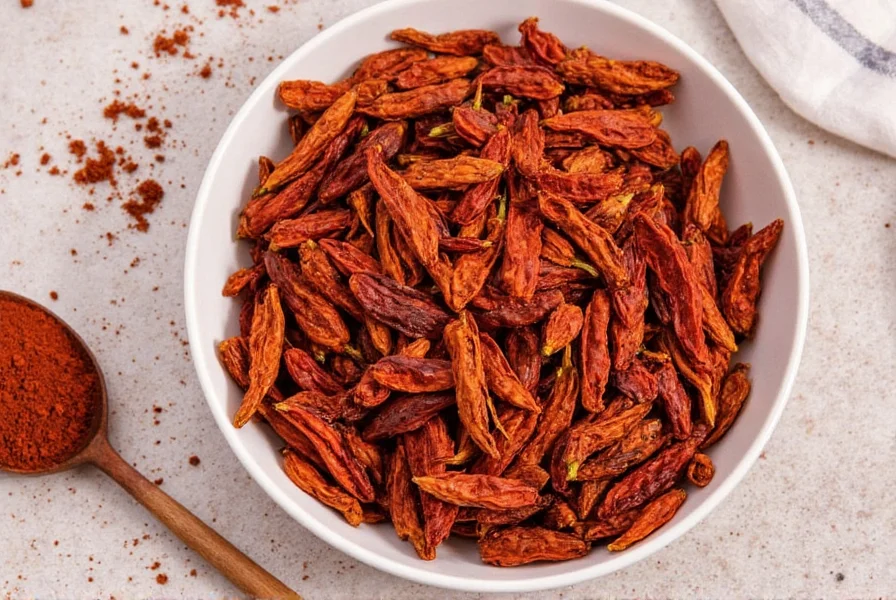Dried chile ancho is the dried form of the poblano pepper, known for its mild heat (1,000-2,000 Scoville units) and rich, smoky, slightly sweet flavor. It's a staple in Mexican cuisine for dishes like mole, chili, and stews. This guide covers everything you need to know: flavor profile, culinary uses, buying tips, storage methods, and authentic recipes.
Table of Contents
- What Is Dried Chile Ancho?
- Flavor Profile & Heat Level
- Top 5 Culinary Uses of Dried Chile Ancho
- Buying Guide: Choosing the Best Dried Chile Ancho
- How to Store Dried Chiles Like a Pro
- 3 Must-Try Recipes Featuring Dried Chile Ancho
- FAQs About Dried Chile Ancho
| Chili Name | Heat Level (SHU) | Main Flavor Notes |
|---|---|---|
| Ancho | 1,000–2,000 | Sweet, smoky, berry undertones |
| Guajillo | 2,500–5,000 | Tangy, tea-like |
| Arbol | 15,000–65,000 | Sharp, nutty, peppery |

What Is Dried Chile Ancho?
Dried chile ancho is simply the dried form of the poblano pepper. When fresh, it's mild and slightly grassy, but once dried, its flavor deepens into something earthy, sweet, and complex. This transformation gives it a unique edge over other dried chilies, making it a favorite in Mexican cooking and beyond.
Flavor Profile & Heat Level
Anchos are known for their mild heat (about 1,000–2,000 Scoville units) and a flavor that's often described as smoky, fruity, and slightly chocolate-like. They bring body and warmth without overpowering a dish.
Top 5 Culinary Uses of Dried Chile Ancho
- Mole Sauce: The backbone of traditional mole poblano, anchos add body and subtle heat. Simmer whole pods with tomatoes, spices, and nuts for a rich, complex sauce.
- Homemade Chili Powder: Grind anchos with cumin, garlic powder, and oregano for a custom blend. Perfect for rubs or seasoning beans.
- Stews & Braises: Simmer them into rich beef or chicken stews for extra depth. Remove pods before serving for smooth texture.
- Rub for Meats: Crushed anchos make a killer dry rub for grilled pork or steak. Combine with brown sugar for a sweet-spicy crust.
- Infused Oils & Vinegars: Add rehydrated anchos to oil or vinegar for spicy marinades. Ideal for salad dressings or drizzling over roasted vegetables.
| Feature | Why It Matters | Recommended Choice |
|---|---|---|
| Bright Reddish-Brown Color | Faded colors mean old, stale peppers with less flavor. | Packaged from Mexico, recently imported |
| Firm Texture | Avoid overly brittle chiles; they lose flavor quickly. | Fresh-packed vacuum sealed |
| Whole Pods vs. Ground | Whole pods last longer and offer more versatility. | Whole pods (unless grinding yourself) |
| Organic Certification | Reduces risk of chemical residues and supports sustainable farming. | USDA Organic or equivalent |
| Brand Reputation | Trusted brands ensure consistency and quality sourcing. | La Costeña, El Yeyo, or Goya |

How to Store Dried Chiles Like a Pro
To keep your dried chile ancho at peak freshness:
- Store in an airtight container away from light and moisture.
- Keep in a cool pantry or fridge for up to 6 months.
- For long-term storage, freeze them in a sealed bag.
- Rehydrate before use for best flavor results.
3 Must-Try Recipes Featuring Dried Chile Ancho
- Mole Poblano
This classic Mexican sauce combines dried ancho with almonds, raisins, and spices. Simmer for 45 minutes until thickened. Serve with chicken or enchiladas. - Smoky Ancho Chili
A hearty chili made with beef, beans, tomatoes, and a rich ancho base. Top with cheese and avocado for maximum flavor. - Ancho-Rubbed Pork Tenderloin
Rub crushed anchos on pork before roasting or grilling. Serve with roasted sweet potatoes and cilantro.

FAQs About Dried Chile Ancho
Can I substitute another chili for dried chile ancho?
Yes! Guajillo or pasilla can work, though the flavor will differ slightly. Mulato peppers offer the closest flavor profile if you're making mole.
Are dried chiles hotter than fresh ones?
Not necessarily. Some become spicier when dried, but anchos actually mellow out. The drying process concentrates flavors but can break down capsaicin compounds, resulting in a more rounded, less sharp heat.
How do I rehydrate dried chiles?
Soak them in hot water for 20–30 minutes until soft. For enhanced flavor, use broth, orange juice, or add a cinnamon stick to the soaking liquid. Drain and remove seeds before blending into sauces.
Can I eat dried chile ancho raw?
Technically yes, but they're tough and bitter. Always toast and rehydrate them first for the best flavor. Raw anchos won't properly release their flavor compounds in dishes.
How can I maximize the flavor of dried chile ancho in my dishes?
Toast whole dried anchos in a dry skillet for 30-60 seconds per side until fragrant but not burnt. This enhances their natural sweetness and smokiness. Always remove stems and seeds before use, and consider blooming rehydrated anchos in oil to fully extract their flavor compounds. For sauces, blend with a small amount of the soaking liquid for maximum flavor transfer.
What's the optimal storage temperature for dried chile ancho?
Dried chile ancho maintains peak freshness at cool room temperature (60-70°F or 15-21°C). Avoid storing near heat sources like stoves. For extended storage beyond 6 months, refrigeration at 40°F (4°C) or freezing is recommended to preserve volatile flavor compounds. Properly stored, they'll retain 90% of their flavor for up to one year.
How does toasting dried chile ancho affect its flavor profile?
Toasting dried chile ancho triggers the Maillard reaction, developing deeper, more complex flavors. It enhances the natural sweetness while adding subtle nutty notes. Be careful not to burn them, as this creates bitter compounds. Proper toasting can increase the perceived sweetness by up to 30% while maintaining the characteristic berry and chocolate notes that make anchos so versatile in both savory and sweet applications.

Why Every Kitchen Needs Dried Chile Ancho
If there's one dried chili you should always have on hand, it's the ancho. From its approachable heat level to its complex flavor profile, it's incredibly versatile and easy to love. Whether you're new to the world of dried chiles or a seasoned pro, the ancho is your gateway to deeper, richer flavors in every dish.
So go ahead — open that spice drawer, pull out those anchos, and start experimenting. Your next culinary masterpiece might just be simmering in a pot with them!











 浙公网安备
33010002000092号
浙公网安备
33010002000092号 浙B2-20120091-4
浙B2-20120091-4